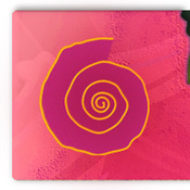Fez, Morocco…Christmas Eve. I couldn’t, didn’t take a picture, though my hand itched for the camera. All I have is mental images, translated here:
“And, this,” says Ali, the city guide, “is the caravanserai (CAR-uh-van-sir-I).” He continues, “The farmers stay here when they come to sell in the Medina.” A donkey wreathed in a rope harness stands in one corner. Two women pull veils closer around their faces and watch us warily, four American women, decidedly unveiled. The men stare at our way, expressionless. I look away to the baskets, woven from palm fronds holding onions, garlic bulbs, potatoes and carrots. Nearby, a cluster of chickens tied together at the feet, cluck and mutter, in a feathered pile on blue plastic mesh.
Ali points to a row of blue battered doors on the second floor. “That’s where the farmers sleep.”
Standing here is almost unbearably intimate. We. are. not. welcome. I smell the straw, the donkey dung, and the dust and try to nod or acknowledge a greeting? That we’ve intruded? Ali led us here, but I can’t look away.
Each cobblestone lane in Fez’s Medina, seems more Canterbury Tales than 2015 Christmas Eve. I’m jolted to remember the celebration of Jesus’ birth in an obscure stable in Bethlehem, another Mediterranean city 2000 years ago. This courtyard, this caravanserai, could be that barnyard. Tonight on a farm in South Dakota after Christmas Eve supper, my brother will read aloud the passage from Luke 2:7 in the New Testament: “… and she gave birth to her firstborn, a son. She wrapped him in cloths and placed him in a manger, because there was no guest room available for them.” (Holy Bible, NIV). This real life moment in Fez feels like a very, very old story. Time travelers? Them? Us?


